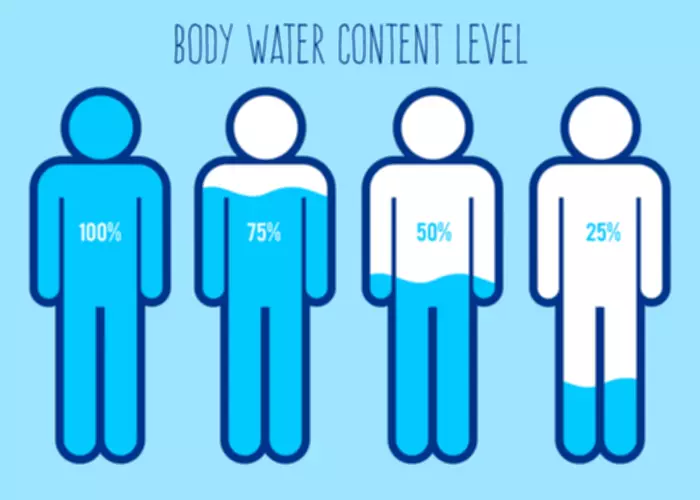Wojnar et al. [112] investigated the correlates of impulsive and non-impulsive suicide attempts in 154 hospitalized patients with alcohol dependence. Lifetime suicide attempts were reported by 43% of the patients, 62% of whom scored high on impulsiveness. The only significant factor that distinguished patients making impulsive suicide attempts from patients how long does cocaine stay in your system what to expect making non-impulsive suicide attempts and with no suicide attempt was a higher level of behavioral impulsivity. Murphy [59] speculated that the gender-related differences he found in his previous studies [60,61] were due to societal attitudes towards women and to different thinking in women that brought them to seek help and decrease their social isolation.
- Tapert et al. [164] found that alcohol-dependent women showed less differential response to working memory than controls in frontal and parietal regions, especially in the right hemisphere.
- It has to be mentioned, however, that CRF receptor numbers and affinity have been reported to be either reduced [168] or unchanged by different groups of investigators [169].
- For practical reasons, these studies should be based in settings that frequently treat those with AUDs who may be experiencing suicidal thoughts, such as AUD treatment programs, emergency departments, inpatient psychiatry units, and detoxification units.
Need Addiction Support?
Although it is logical to pursue foundational studies at this early stage of research, there is also an urgency to explore what may work in preventing suicidal behavior based on current knowledge. For example, the current zeitgeist in emergency settings is to wait until intoxicated suicidal individuals “sober up” and reassess them for safety, with most being sent home with an outpatient appointment. Suicide, heart disease and cancer are consistently among the top 10 causes of death of Canadians, and alcohol increases the risk of all of these killers. Over three-quarters of Canadians drink alcohol, so either you drink or know someone who does. As Canadians weigh the pros and cons of adopting the new drinking guidelines, they should be thinking not just about the risks to their physical health, but also to their mental health.
1. Suicide and Alcohol Abuse in Adolescents
Several case-control studies at the individual level have shown a high prevalence of alcohol abuse and dependence among suicide victims [89,90]. Kolves et al. in a psychological autopsy study reported that 68% of males and 29% of females who committed suicide met the criteria for alcohol abuse or dependence [89]. Strong support for a direct link between alcohol and suicide comes from aggregate-level data. Both longitudinal and cross-sectional aggregate-level studies usually report a significant and positive association between alcohol consumption and suicide [91–93].
Increases Among Males and Females
So, while it might only take four drinks for you to be legally intoxicated, it’d take quite a bit more to kill you. It might not be something you tend to think about when you’re relaxing with a few drinks and a few friends. Treatment providers are available 24/7 to answer your questions about rehab, whether it’s for you or a loved one. The pain felt by family members and loved ones of someone who has taken their own life is often harder to deal with than if they died by another means. It is important to note that suicide is not something that gives blame or points fingers, it is powerful and greedy and takes ruthlessly.
Suicidal Behavior: Links Between Alcohol Use Disorder and Acute Use of Alcohol
Your age, weight, and sex assigned at birth are major factors, but they’re not the only ones. If someone you love has a problem with alcohol, or you have noticed them clonazepam: drug uses dosage side effects acting out of the ordinary, it’s important not to jump to conclusions. Throwing around unfounded accusations could make them feel attacked and escalate the situation.
By analyzing the data from 33 longitudinal studies — and 10,253,101 participants — we determined that alcohol use is a substantial risk factor for death by suicide. In fact, we found that alcohol use increased the risk of death by suicide by a frightening 94 per cent. Over half of alcohol-related deaths are because of health effects from drinking too much over time. But drinking a large amount of alcohol in a short period of time can also be deadly.
More specifically, agonism to the amygdala kappa receptors mediated anxiogenic-like behavior [269] whereas antagonism to kappa receptors in the amygdala [269, 270] and prefrontal cortex [271] produced anxiolytic effects. Relative to controls, patients with OUD treated with buprenorphine demonstrated reduced amygdala activation in response to negative stimuli [272]. In addition, buprenorphine causes decreased amygdala responses to heroin-related cues in heroin-dependent patients [273]. Suicide deaths involving heavy alcohol use have increased significantly among women in recent years, according to a new study supported by the National Institute on Alcohol Abuse and Alcoholism (NIAAA). Previous research has shown that alcohol is a risk factor for suicidal behavior and that women have a higher risk than men do for suicide while intoxicated. And in the two decades leading up to 2018, suicide death rates in the United States increased, with the rate among women increasing faster than the rate among men.
People who use opioids are 14 times more likely to die by suicide compared to the general population [10, 142], perhaps the highest odds of all substances. Indeed, estimates of lifetime suicide attempt rates among individuals with OUD are gravely elevated, ranging between 17% and 48% alcohol and seizures can drinking cause epilepsy or convulsions [143–152]. The study involved 14,949 people, broadly representative of the general public in England, who completed surveys (Adult Psychiatric Morbidity Surveys) about alcohol consumption and patterns of harmful use (measured by the Alcohol Use Disorder Identification Test – AUDIT).
Our study indicates these combine to produce a 282 per cent increased risk of death by suicide. Whether you’re seeking treatment for yourself or you’re concerned about a loved one, know that there are many ways to help prevent suicide and stop alcohol misuse. Many people in similar situations have benefited from a combination of mental health and substance use disorder treatment.
They often accused their partners of causing their children’s troubles and reproached social service and psychiatric authorities for failing to look after them properly. However, despite higher rates of impulsive attempts and a higher level of lethality in patients with alcohol use disorders, the use of alcohol at the time of attempt did not differ significantly between impulsive and non-impulsive attempters [113–115]. Methadone is a long-acting full opioid receptor agonist that has been long used for treatment of individuals with OUD [237]. Although methadone treatment in persons with OUD and comorbid depression may lead to modest improvement in depressive symptoms, they often require antidepressant medications to produce meaningful reductions in depressed mood [237]. Extended-release naltrexone hydrochloride (XR-NTX) is a nonselective opioid receptor antagonist that has been also widely used for treatment of OUD and AUD, among other indications.
Legislators behind the crusade to push more alcohol want to take that choice away from municipalities. These same lawmakers are behind other efforts to weaken alcohol law, including an extreme provision to allow liquor companies to ship alcohol from the factory to the doorstep. At a time when alcohol-related traffic deaths are up 30%, it boggles the mind that the state decided to promote cocktails in cars for another five years. Findings from the state Department of Health Behavioral Risk Factor Surveillance System show one in six adults (16.4%) in New York demonstrated excessive alcohol use in the form of either binge or heavy drinking. The department calculates that “Excessive alcohol use also results in economic costs and costs NYS an estimated $16.3 billion, or approximately $2.28 per drink.” The adverse economic impact should not be overlooked. Building on the new study, Zhang has recommended to healthcare institutions and professional societies that they implement website feedback mechanisms and carry out regular content audits to guard against potentially harmful language.
Simon et al. [113] found that individuals who made impulsive suicide attempts reported higher rates of aggressive behavior than those who made non-impulsive suicide attempts. They hypothesized that poor behavioral control, largely dependent on factors such as alcohol abuse, was an important indicator of risk for impulsive suicide attempts. Alcohol intake may result in a lack of behavioral inhibition and other aspects of impulsiveness, such as poor thinking and planning, as well as impaired attention. Buprenorphine, a mu opioid receptor partial agonist and kappa receptor antagonist, has become one of the most prescribed treatments for OUD relapse prevention in the US [248, 249]. Induction of buprenorphine in the emergency room for individuals with OUD who present with opioid overdoses has been shown to decrease the risk for future overdose [250].


